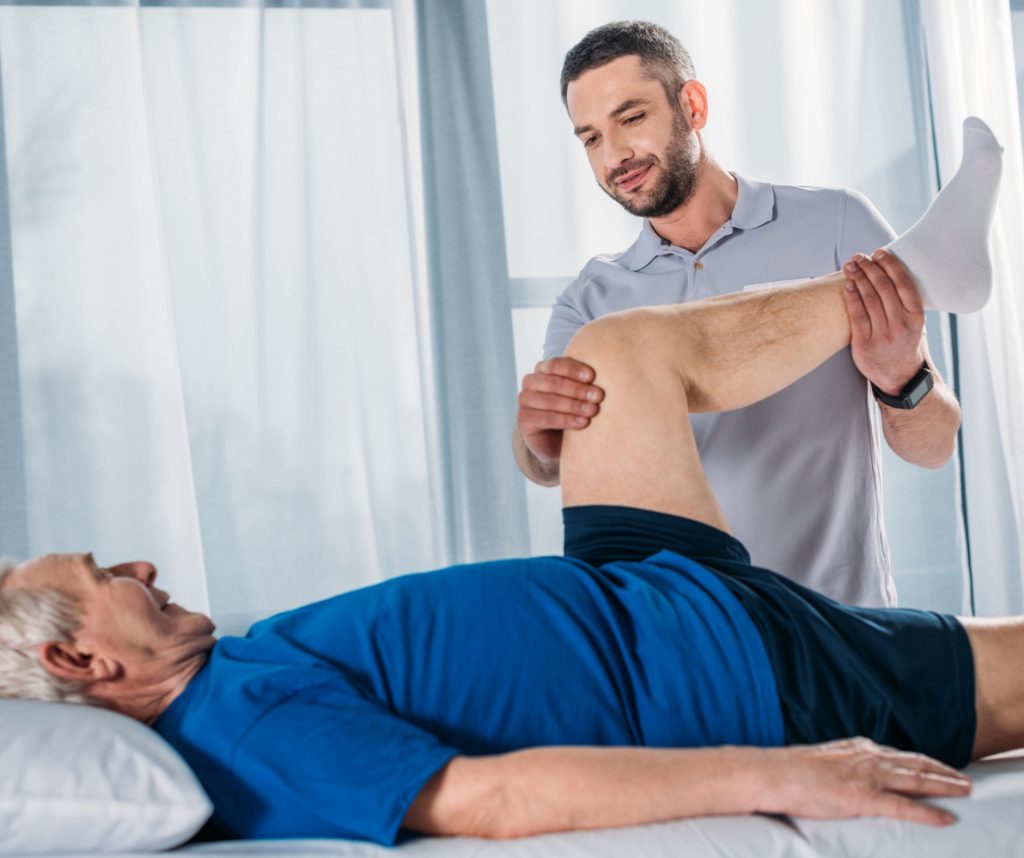Climbing Stairs After Hip Replacement
Hip replacement surgery is a common procedure for people suffering from severe hip pain and limited mobility. While the surgery itself can greatly improve your quality of life, the recovery process can be challenging, especially when it comes to climbing stairs.
At Physio2Home, we understand the difficulties that come with post-surgery rehabilitation. That’s why we offer bespoke domiciliary physiotherapy programs to help patients achieve their rehabilitation goals in the comfort of their own home.
Why Climbing Stairs After Hip Replacement Can Be Challenging
The hip joint is crucial for walking and climbing stairs. After hip replacement surgery, your hip muscles and tendons may become weak due to lack of use during the recovery period. This can make it difficult to climb stairs as you may experience pain, stiffness, and weakness in your hip area.
In addition, your new hip joint may feel different from your natural one, which can affect your balance and coordination. This is why proper rehabilitation is essential for regaining strength and function in your hip muscles.
Guide to Stair Navigation After Hip Replacement Surgery
1. Pre-Surgery Preparations
Preparing for Stair Navigation Post Hip Replacement Surgery
Before your surgery, it’s crucial to prepare your home and yourself for navigating stairs. Discuss your mobility plan with your healthcare provider to understand any restrictions and receive personalized advice. Practice using assistive devices like crutches or walkers if recommended.
Adapting Home Environment for Easier Stair Access
Modify your home environment to facilitate easier stair navigation post-surgery. Install secure handrails on both sides of staircases, ensuring they extend the full length. Clear clutter and ensure adequate lighting to prevent tripping hazards. Consider relocating essential items to the ground floor temporarily to minimize stair use during early recovery.
2. Safety and Accessibility
Safety Tips for Stairs After Hip Replacement Surgery
Safety is paramount when navigating stairs after surgery. Always use handrails and proceed step-by-step. Ascend stairs leading with your non-operated leg and descend with your operated leg. Wear supportive, non-slip footwear to prevent falls.
Assistive Devices for Stair Navigation
Depending on your recovery progress, use assistive devices such as crutches, walkers, or canes to provide stability. Consider a stairlift for extended difficulty with stairs. Consult with your healthcare team to determine the most suitable devices for your needs.
Advanced Stair Climbing Techniques and Strategies
As you regain strength, learn advanced stair climbing techniques from your physiotherapist. Techniques like the “step-to” method, where you place both feet on each step before advancing, can enhance fluidity and safety.
3. Physiotherapy and Exercises
Physiotherapy Exercises for Stair Climbing
Engage in prescribed physiotherapy exercises to strengthen muscles crucial for stair climbing. Exercises may include leg lifts, seated marches, and ankle pumps. Start exercises early under supervision to gradually build strength and confidence.
Early Post-Surgery Stair Navigation
Initially, limit stair use to essential trips and under supervision. Begin with minimal steps and increase gradually as advised by your physiotherapist. Avoid overexertion and follow recommended techniques to prevent strain.
Progressing in Stair Climbing Post-Surgery
Over time, increase stair climbing frequency and duration. Integrate stair climbing into daily activities to improve balance and endurance. Monitor your progress and adjust activities based on your comfort level and therapist’s guidance.
Gradual Increase in Stair Use
Progress through recovery by incrementally increasing stair use. Start with short, frequent sessions and expand to longer stretches as strength improves. Listen to your body and rest as needed to avoid overstrain.
Maintaining Hip Health for Stair Use
Sustain hip health by maintaining a regular exercise regimen and adhering to proper body mechanics. Continue prescribed exercises beyond recovery to sustain muscle strength and flexibility essential for stair navigation.
4. Monitoring and Managing Recovery
Monitoring Progress and Managing Discomfort
Track recovery milestones and communicate any persistent discomfort or swelling to your healthcare provider. Utilize ice packs and pain relievers as recommended to alleviate minor discomfort.
Overcoming Challenges in Stair Navigation
Address challenges such as fear or difficulty with stair navigation by seeking guidance from your physiotherapist. Modify exercises and techniques to accommodate individual progress and build confidence gradually.
Addressing Fear and Anxiety
Combat fear and anxiety associated with stair navigation through relaxation techniques and positive reinforcement. Gradual exposure to stair climbing can boost confidence over time, enhancing overall recovery experience.
5. Long-Term Mobility and Independence
Tips for Long-Term Stair Mobility
Maintain long-term stair mobility by staying physically active and maintaining a healthy weight. Incorporate balance and strength training exercises into your routine. Attend regular check-ups to monitor hip health and address any concerns promptly.
Achieving Independence in Stair Navigation Post Hip Replacement Surgery
Achieving independence in stair navigation is a significant achievement. Celebrate progress and continue practicing safe techniques. Adapt your living environment to support independence, seeking assistance when necessary for ongoing support.
6. Professional Support and Resources
Additional Resources and Support Options
Take advantage of professional resources such as physiotherapists, occupational therapists, and support groups specializing in hip replacement recovery. Access educational materials and community networks to enhance your recovery journey.
By following these comprehensive guidelines and working closely with your healthcare team, you can navigate stairs confidently and safely after hip replacement surgery, achieving greater mobility and independence in your daily life.
How Physio2Home Can Help
Our experienced physiotherapists are trained to work with patients who have undergone hip replacement surgery. We will assess your condition and create a personalized treatment plan tailored to your specific needs.

We use a combination of exercises to help improve muscle strength, flexibility, and balance in your hip area. Our therapists will also teach you how to use any assistive devices such as crutches or walkers while climbing stairs safely.
Hip replacement surgery can significantly enhance mobility and quality of life for individuals suffering from hip pain and limited movement. However, mastering stair navigation post-surgery requires careful preparation, safety measures, physiotherapy, and ongoing support. This comprehensive guide outlines everything you need to know to navigate stairs confidently and safely after hip replacement surgery.


